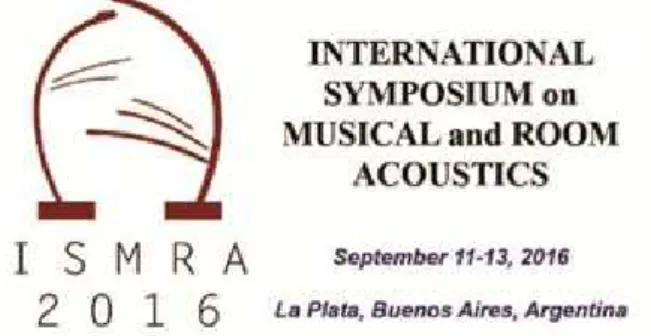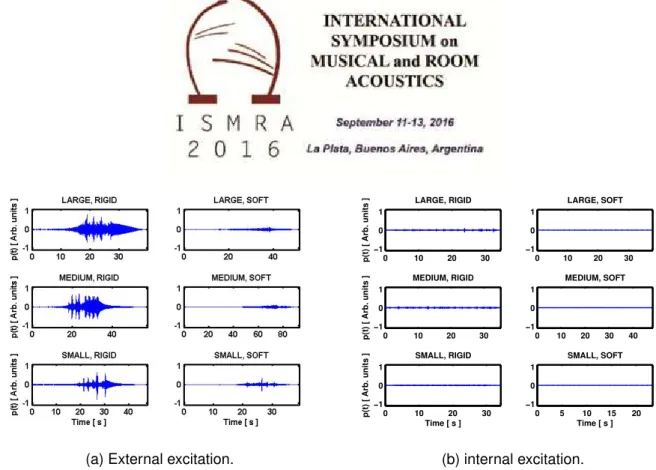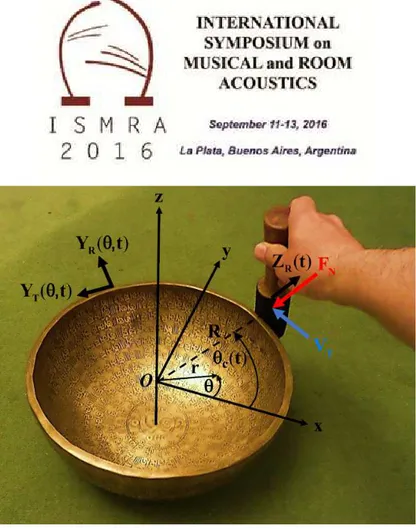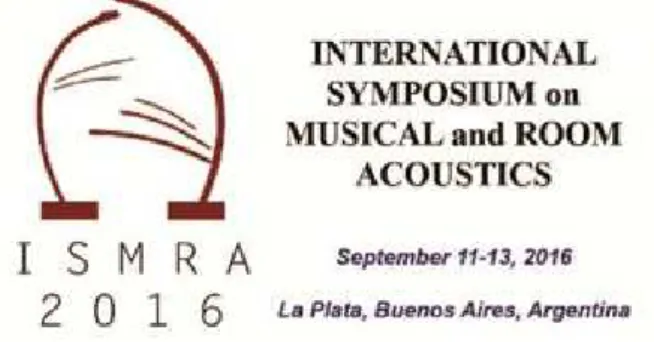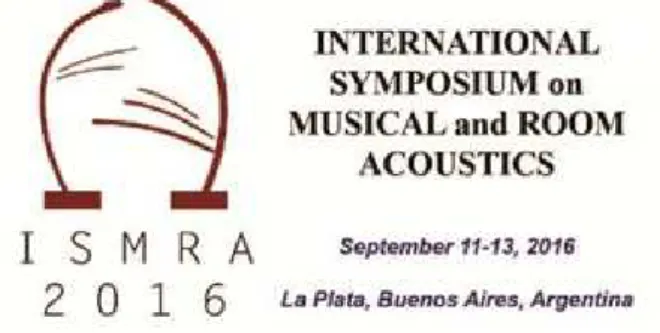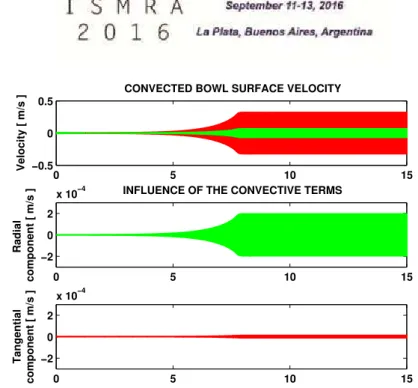Physics of musical instruments and voice: Paper 60
When singing bowls don’t sing: a numerical and
experimental investigation on the subtle dynamics of
Tibetan bowls
Debut Vincent(a,b), Antunes Jose(a,b)
(a)Centro de Ciências e Tecnologias Nucleares, Instituto Superior Técnico, Universidade de
Lisboa, Estrada Nacional 10, Km 139.7, 2695-066 Bobadela LRS, Portugal. jantunes@ctn.tecnico.ulisboa.pt
(b)Instituto de Etnomusicologia - Centro de Estudos em Música e Dança, Faculdade de Ciências
Sociais e Humanas, Universidade Nova de Lisboa, Av. de Berna 26C, 1069-061 Lisbon, Portugal. vincentdebut@fcsh.unl.pt
Abstract:
Tibetan bowls have been traditionally used for ceremonial or meditation purposes, but also in contemporary music-making. They are handcrafted and produce different tones depending on their shape, size, mass and their alloy composition. Most important is the sound producing technique by impacting and/or rubbing, as well as the excitation location, the hardness and friction characteristics of the excitation stick. In a previous paper, we developed a physically-based method for nonlinear time-domain simulation of Tibetan bowls. Our computational approach, based on a compact modal formulation, produces realistic dynamical responses. In the present paper we focus on an interesting feature of Tibetan bowls: in order to produce self-excited responses, the stick must rub the bowl against the external side of the rim, e.g. radially pressing outwards the bowl center. Indeed, experimenting with many bowls showed that they do not sing when rubbed internally. We start documenting this claim with experimental results from representative bowls, and then exploit our computational model in order to reproduce the observed behavior qualitatively. Our results are in good agreement with experiments, thereby demonstrating that internally excited bowls are dissipative and hence unable to sing.
When singing bowls don’t sing: a numerical and
experimental investigation on the subtle dynamics of
Tibetan bowls
1
Introduction
Tibetan bowls have been used for centuries as musical instruments and ritual tools, specifically in Buddhist monastics, and various use of these instruments can be today found in contemporary music. They are handcrafted and produce different musically-interesting tones according to their shape, size, mass and their alloy composition. Most important is the sound producing technique which involves the local action of a massive stick, called the puja, and includes both impact and friction excitations, thereby resulting in a combination of ringing and singing tones. Sound emergence then comprises complex nonlinear phenomena usually challenging to address by numerical analysis [1]. From the modelling standpoint, due to the time-vayring excitation contact location of the puja on the bowl, the problem also shares some fundamental concepts peculiar to moving-load dynamical problems [2], which are very common in mechanical engineering applications.
In previous work by Inacio et al. [3], dynamic simulations of Tibetan bowls were presented and a throrough analysis of the physical mechanisms leading to sound production was proposed. Our efforts aimed at describing the physics as closely as possible, in order to provide a full account of the global dynamics, therefore developing a physical model and simulating the general trends observed in playing practice. Our computational approach, based on a compact modal formulation, produced realistic vibratory responses - see reference [3], and provides an efficient tool for closely examinating the subtleties of friction-induced axisymmetric shells vibrations. Besides the number of remarkably stable periodic regimes which may be triggered, an interesting dynamical feature of Tibetan bowls, surely blurred by the unusual playing technique, is the nonexistence of steady-state musical regime when rubbed internally, e.g. by pressing radially outwards the bowl center. Indeed, experimenting with many bowls shows that they do not sing for internal excitation.
In this paper, we document this claim with both experimental and numerical results. To that end, a number of representative Tibetan bowls of different size and mass has been investigated experimentally for different rubbing conditions, and time-domain simulations have been performed by exploiting our computational model which is also briefly presented here. The simulation results are in qualitative agreement with the experiments, and demonstrate that internally excited bowls are dissipative and hence unable to sing.
2
Experiments
depend on the characteristics of the bowl/puja friction and contact interaction. As any nonlinear self-excited oscillators, various dynamical regimes are thus obtained by changing the set of initial conditions, and playing experience shows particularly that periodic regimes of different fundamental frequencies may emerge. Other characteristic feature of bowl sound is the superimposed beating behaviour, perceived by a fixed listener.
Figure 1: Singing Tibetan bowl and puja sticks used in the experiments.
A number of three Tibetan bowls of different size and mass, were played with pujas made of different materials, namely rubber and wood - see Fig. 1. Either external or internal rubbing excitations were attempted, and acoustic response signals were recorded by a microphone, at a distance of about 1 m and an angle of 45◦ with the horizontal plane. The pressure waveforms obtained for the 12 studied configurations are plotted in Fig. 2. As seen by comparing results in Figs. 2a and 2b, while self-excited regimes were always reached for external excitation, it has been impossible to produce a periodic regime by exciting internally the bowl. Because of the mildly-controlled human playing, several attempts were performed by changing somehow the normal force and/or the travelling velocity of the puja, and other bowls, not documented here, were also tested, and always the same behaviour was present. Physically, this suggests that energy transfers occuring in the system are strongly influenced by the direction of the excitation, which can radically affects the global energy balance. Contrary to externally friction-excited bowls, bowls excited internally manage to absorb all the energy supply provided continuously by the puja. Figure 2a also evidences the superimposed beating behaviour already mentionned. In [3], the origin of the beating is discussed, and surprisingly, it is not related with the geometrical imperfections of the bowl structure, but is a manifestation of the radiation pattern of Tibetan bowl when listeners are fixed in space, caused by the revolution of the linearly unstable modes which follows the puja motion at the spinning frequency.
3
Computational model
(a) External excitation.
0 10 20 30
−1 0 1
LARGE, RIGID
p(t) [ Arb. units ] 0 10 20 30 −1
0 1
LARGE, SOFT
0 10 20 30
−1 0 1
MEDIUM, RIGID
p(t) [ Arb. units ] 0 10 20 30 40 −1
0 1
MEDIUM, SOFT
0 10 20 30
−1 0 1
SMALL, RIGID
p(t) [ Arb. units ]
Time [ s ]
0 5 10 15 20 −1
0 1
SMALL, SOFT
Time [ s ]
(b) internal excitation.
Figure 2: Waveforms of the pressure recorded for the 12 studied configurations. Small to large Tibetan bowls were played, using either soft (rubber-like) or rigid (wood) puja. Recording level is identical for all cases.
subjected to both impact and friction excitations. The model, based on the modal approach, successfully reproduces the singing and ringing responses of the bowls when impacting or rubbing its rim externally. Here, we remind the essential ingredients of the modelling and present the dynamical modal equations. Similarly to [3], the formulation is written in a fixed coordinate frame for the bowl, and refinements in the modelling are included by accounting for the actual moving load on the bowl rim. As observed in other mechanical systems such as pipes conveying flow [4], the influence of moving load can be important for a fundamental understanding of the detailed dynamics. However, knowing that typical spinning frequency of the puja stick is small compared to the frequency of the vibratory motions, one might expect only a small influence of these terms for the problem at hand.
3.1 Dynamics of the bowl
Tibetan bowls are essentially axisymmetric shells, and as any structure of this type, they exhibit normal modes in orthogonal pairs, with near-identical modal frequencies. When excited, the vibratory response of the bowl wall Y(θ,t) involves the dynamical coupling of the radialYR(θ,t)
and tangential YT(θ,t) motions, and is given by:
Y(θ,t) =YR(θ,t)er+YT(θ,t)et (1)
where er and et are the unit vectors defining the radial and tangential direction respectively
Figure 3: Tibetan bowl excited by tangential rubbing of a massive puja.
formulated as:
YR(θ,t) =
N
∑
n=1
qAn(t)φA
Rn(θ) +qBn(t)φRnB (θ)
, YT(θ,t) =
N
∑
n=1
qAn(t)φA
T n(θ) +qBn(t)φT nB (θ)
(2)
where qAn,B are the modal amplitudes of the two modal families, and φRnA,B and φ A,B
T n are the corresponding mode shapes in the radial and tangential directions given by:
φA
Rn(θ) =cos(nθ), φT nA (θ) =−sin(nθ)/n, φRnB(θ) =sin(nθ), φB
T n(θ) =cos(nθ)/n
(3a) (3b) Following Inacio et al. [3], we may then built a dynamical model for the Tibetan bowl, formulated as a set of 2N modal equations which takes the form:
mAnq¨A
n(t) +cAnq˙An(t) +kAnqAn(t) = fnA(t) mBnq¨B
n(t) +cBnq˙Bn(t) +kBnqBn(t) = fnB(t)
(4a) (4b)
wheremAn,B,cnA,B, andknA,B are the modal parameters of the modal families A and B, respectively given by:
mAn,B= Z ℓ
0
ρℓ(θ)
φnA,B(θ)
2
dℓ , kAn,B=mAn,B(ωnA,B)2, cAn,B=2mA,B
n ωnA,BζnA,B (5) with ℓ the bowl perimeter andρℓ the linear mass density. The modal excitations fnA,B in Eq. (4) stem from the projection of the external force f(x,t) on the respective modal basis, computed as
fnA,B(t) = Z ℓ
Since the sound producing technique involves impact and/or rubbing around the bowl rim, both nonlinear impact and friction interaction are accounted in our modelling. Excitations will be assumed as a travelling point-force of the form
fp(θc(t),t) =
fR(t)er+fT(t)et
δ(θ−θc(t)) (7)
where θc(t) =Ωt is the contact angle andΩ=vT/Ris the spinning velocity of the puja, with vT
its tangential velocity imposed by the musician, and R the bowl radius. Substituting Eq. (7) in (6), the modal forces are expressed in the form of:
fnA,B(t) = fR(t)φRnA,B(θc(t)) +fT(t)φT nA,B(θc(t)) (8)
3.2 Interaction forces
3.2.1 Radial interaction
The radial force exerted by the puja stick on the bowl at any angular location θc(t) can be simply described by a penalty formulation such as:
(
fR(t) = −K c
YR(θ
c,t)−Z(θc,t)
−Cc
˙
YR(θ
c,t)−Z˙(θc,t)
for contact
fR(t) = 0 for non-contact (9)
where Kc and Cc are two penalty constants referred to as the contact stiffness and damping coefficient, and which are directly related to the puja material. From Eq. (9), it can be seen that the radial force fR(t) is negative for an external excitation since contact occurs when YR(θc,t)>Z(θc,t), resulting in an opposite positive force on the puja. For internal excitation, contact occurs for Z(θc,t)>YR(θc,t), and the reverse sign applies for the radial force.
For accurate modelling of the interaction, it must be reminded that equations are here formulated in a fixed coordinate frame for the bowl, with a moving load acting on it, so that the motion of the bowl fells by the puja differs than if the coupling location was fixed. One consequence is that any time derivative of the bowl motion appearing in the formulations of the bowl/puja interaction must be expressed using material derivatives as:
dY(θ(t))
dt =
∂Y ∂t +vT
∂Y
∂ θ (10)
with vT the constant speed of the moving puja. Bowl velocities in Eq. (9) are then computed
as:
dYR(θ(t))
dt θc = N
∑
n=1
h
˙
qAn(t)φA
Rn(θc) +q˙Bn(t)φRnB (θc) i
+vT
N
∑
n=1
"
qAn(t)∂ φ
A Rn ∂ θ θc
+qBn(t)∂ φ
B Rn ∂ θ θc # (11)
For the problem at hand, however, one expects a small influence of the second term in the right-hand-side of Eqs. (10) and (11) since normal playing uses low values of vT, less than
1 m.s−1
, so that the spinning frequency Ω=vT/R remains small compared to the frequencies
3.2.2 Friction interaction
It was found that contrary to bowed strings, friction-excited bars and shells are systems which are sliding for most of the time [5]. For synthesis purpose, this is a very convenient because the simulations of stick-slip regimes is usually tricky numerically, and small time-step are required to capture the sudden stick-slip transitions when solving the equations through explicit numerical schemes. Inacio et al. [3] implemented a simple approach for computing the highly non-linear friction interaction force, and used a regularized friction law which seems adequate for simulating singing Tibetan bowls. Retaining the same approach here, the friction force is formulated as:
(
fT(t) =−µd Y˙c(θc,t)
|fR(t)|sign Y˙
c(θc,t)
if |Y˙
c θc,t
| ≥ε sliding
fT(t) =−µS|fR(t)|Yc˙ θc,t
/ε if |Yc˙ θc,t
|<ε pseudo-adherence
(12a) (12b)
whereY˙
c(θc,t) =vT−Y˙T(θc,t)is the bowl/puja relative velocity, µS is the static friction coefficient,
and µd is the dynamic friction coefficient used during sliding, which depends on the relative bowl/puja tangential velocity as:
µd(Yc˙) =µD+ (µS−µD)e−|
˙
Yc|/v0
(13) where µD is an asymptotic limit of the friction coefficient when |Yc˙| →∞ and
v0 is a parameter
controlling the decay rate of the friction coefficient with Y˙
c θc,t
. The friction model (13) can be readily fitted to typical experimental data by adjusting the empirical constants µS, µD and
v0. According to Inacio et al. [3], a regularization parameter ε of about 10−4 ms−1 seems
adequate for reproducing realistic behaviour of rubbed Tibetan bowls. Again, note thatY˙
c used in (12)-(13) must be computed through Eq. (11).
3.3 Dynamics of the Puja
The model for the excitation has now to be completed by writing the puja dynamics. The puja is modeled as a rigid body of mass m, neglecting any elastic dynamics. Its radial motionZ(θc,t) in the direction normal to the bowl surface (see Fig. 3), is simply governed by the rigid-body dynamical equation:
mZ¨(θc,t) =±fN−fR(θc,t) (14) where fN is a constant normal force imposed by the player, and fR(θc,t)is the radial component of the puja/bowl interaction forces. Note that here either external or internal excitations are considered. The normal force fN will be negative for an external excitation while it will be positive for internal excitation.
3.4 Fully-coupled computational model
Grouping Eqs. (4), (9), (12) and (14), the self-sustained response of the coupled system is formulated as a set of 2N+1 second-order modal ODEs, written in the matrix form as:
MA 0 0
0 MB 0
0 0 m
¨qA ¨qB ¨ Z +
CA 0 0
0 CB 0
0 0 0
˙qA ˙qB ˙ Z +
KA 0 0
0 KB 0
0 0 0
qA qB Z = fA(t)
fB(t)
fZ(t)
where the column vectors qA,B(t) represent the modal displacements for the two orthogonal
modal families, and fA,B and fZ are column vectors stemming from the modal projection of the
forces applied to the bowl rim and the puja respectively, written in a compact form as:
fA(t) = fT(t)
h
φTA1(θc), . . . ,φT NA (θc) iT
+fR(t)hφRA1(θc), . . . ,φRNA (θc) iT
fB(t) = fT(t)
h φB
T1(θc), . . . ,φT NB (θc) iT
+fR(t)hφB
R1(θc), . . . ,φRNB (θc) iT
fZ(t) =±fN−fR(t)
(16a)
(16b) (16c)
From Eq. (16), it can be seen that the modal forces stemming from the travelling puja fully couple the 2N+1 degrees of freedom of our system.
4
Numerical simulations
Numerical computations were performed for reproducing the experimental observations, by changing the direction of the constant normal force excitation, as well as for different assumptions concerning the contact and friction characteristics of the bowl/puja interaction. The case of softer and stiffer pujas were considered by testing contact stiffnesses Kc of 105
N/m and 106
N/m, with friction parameters of µS=0.8, µD=0.4,v0=0.1 and µS=0.4,µD=0.2, v0=0.1 respectively. Numerical integration of the closed set of nonlinear coupled equations
(15) was achieved using a discrete version of the direct integration method [6, 7]. In order to cope with the large settling times that arise with singing bowl, 15 seconds of computed data were generated, enough to accomodate transients for external excitation, and modal equations were solved using a safe time-step of 10−6
s. The simulations were based on modal data identified experimentally on a typical Tibetan bowl, which can be found in [3], assuming 7 flexible modes for the bowl modal basis. The puja is modelled as a simple mass of 20 g, moving at a tangential velocity of vT=0.3 m.−1, and a constant normal force FN =±3 N is
assumed (positive for external excitation and negative for internal excitation).
0 5 10 15 −0.1
0 0.1
RADIAL VELOCITY RESPONSE OF THE BOWL AT θc(t)
Vel. [ m/s ]
Time [ s ]
Frequency [ Hz ]
2 4 6 8 10 12 14
0 1000 2000 3000 4000 5000 6000 7000 8000
(a) Soft puja.
0 5 10 15
−0.1 0 0.1
RADIAL VELOCITY RESPONSE OF THE BOWL AT θc(t)
Vel. [ m/s ]
Time [ s ]
Frequency [ Hz ]
2 4 6 8 10 12 14
0 1000 2000 3000 4000 5000 6000 7000 8000
(b) Stiff puja.
0 5 10 15
−0.01 0 0.01
RADIAL VELOCITY RESPONSE OF THE BOWL AT θc(t)
Vel. [ m/s ]
Time [ s ]
Frequency [ Hz ]
2 4 6 8 10 12 14
0 1000 2000 3000 4000 5000 6000 7000 8000
(c) Soft puja.
0 5 10 15
−0.01 0 0.01
RADIAL VELOCITY RESPONSE OF THE BOWL AT θc(t)
Vel. [ m/s ]
Time [ s ]
Frequency [ Hz ]
2 4 6 8 10 12 14
0 1000 2000 3000 4000 5000 6000 7000 8000
(d) Stiff puja.
Figure 4: Radial velocity time-history and corresponding spectrogram for external (top) and internal (bottom) rubbing excitation.
5
Conclusions
0 5 10 15 −0.5
0 0.5
CONVECTED BOWL SURFACE VELOCITY
Velocity [ m/s ]
0 5 10 15
−2 0 2
x 10−4
Radial
component [ m/s ]
INFLUENCE OF THE CONVECTIVE TERMS
0 5 10 15
−2 0 2
x 10−4
Tangential
component [ m/s ]
Figure 5: Tangential (red) and radial (green) bowl surface velocity at the contact point, and respective influence of the terms corresponding to the convected load - see Eq.(11).
Acknowledgments
The authors gratefully acknowledge the financial supports from the Fundação para a Ciência e Tecnologia through the projects UID/Multi/04349/2013 for C2TN researchers, and UID/EAT/00472/2013 for INET-md researchers.
References
[1] A. Fidlin. Nonlinear oscillations in Mechanical Engineering. Springer, N.Y., 2006.
[2] H. Ouyang. Moving-load dynamic problems: a tutorial (with a brief review. Mechanical Systems and Signal processing, 25:2039–2060, 2004.
[3] O. Inacio, L. Henrique, and J. Antunes. The dynamics of tibetan singing bowls. Acta acustica united with Acustica, 92:637–653, 2006.
[4] F. Axisa. Flow conditions at the inlet of aspirating pipes: part 1 - theory. In Proceedings of the ASME 2010 Fluids Engineering Summer Meeting, 2010.
[5] O. Inacio, L. Henrique, and J. Antunes. Nonlinear dynamics and playability of bowed instruments: from the bowed string to the bowed bar. In Proceedings of the 11th International Conference on Computational Methods and Experimental Measurements, 2003. [6] G.C. Hart and K. Wong. Structural dynamics for structural engineers. International series in
pure and applied physics. John Wiley & Sons, 2000.
[7] V. Debut, J. Antunes, M. Marques, and M. Carvalho. Physics-based modeling techniques of a twelve-string portuguese guitar: a three-dimensional non-linear time-domain computational approach for the multiple-strings/bridge/soundboard coupled dynamics.
